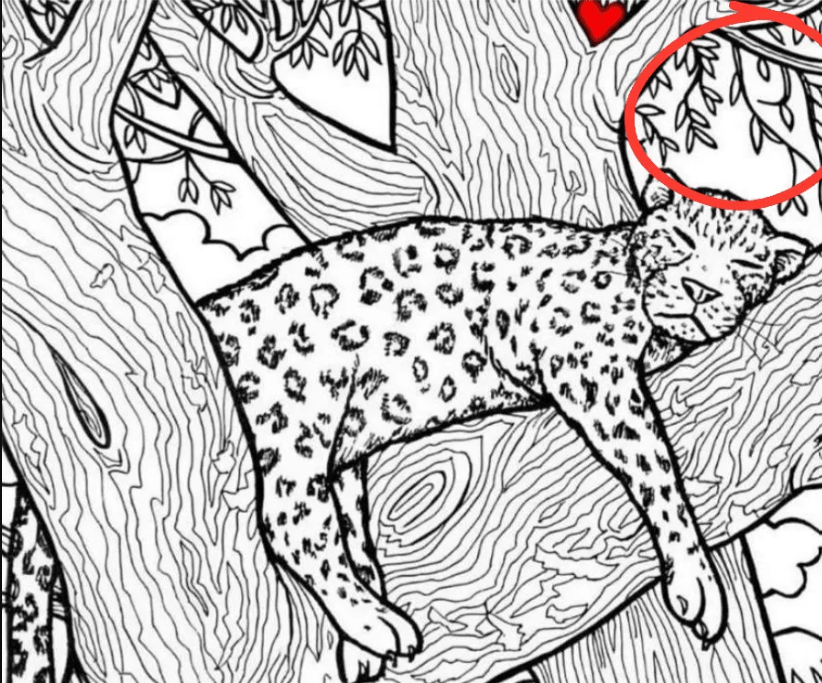A new visual puzzle making the rounds online has captured widespread attention with its deceptively simple challenge. The image features a serene leopard resting on a tree branch amid dense, vibrant greenery. What complicates the peaceful scene is a hidden fish concealed somewhere within the illustration. The accompanying caption, confidently stating that “10/10 eyes can see where the fish is,” invites viewers to put their observation skills to the test.
As the puzzle circulates across social platforms, thousands of people are scrutinizing every detail of the image. Many zoom in to inspect leaves, branches, and even the leopard’s distinctive spots in search of the well-hidden fish. Some claim to locate it almost instantly, while others admit to spending several minutes without success. The mix of quick discoveries and prolonged searching fuels engagement and encourages users to challenge friends.
The effectiveness of the puzzle lies in its combination of camouflage and visual misdirection. The fish is designed to blend seamlessly with the surrounding textures—whether tree bark, foliage, or the leopard’s fur pattern. Because the human brain tends to identify familiar shapes within expected contexts, encountering a fish in a jungle scene disrupts that pattern recognition. The strong central focus on the leopard also diverts attention away from subtler details, allowing the fish to hide in plain sight.
Hidden-object puzzles like this rely on pattern matching and selective attention, making them both entertaining and surprisingly mentally stimulating. Viewers may try to identify specific shapes such as fins, a tail, or an eye in order to pinpoint the concealed figure. Some individuals immediately pick up on these cues, while others may overlook them despite careful searching.

The broad appeal of puzzles like this stems from their ability to test patience and perception in a lighthearted way. They offer a shared experience where people compare their success or frustration, contributing to the puzzle’s viral reach. Ultimately, the challenge serves as a playful reminder of how easily our eyes can be tricked.
While simple on the surface, these puzzles highlight the complexity of visual perception and the satisfaction that comes from uncovering a cleverly hidden object.